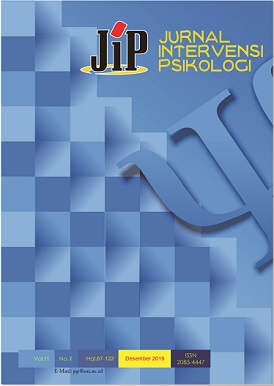Main Article Content
Abstract
Keywords
Article Details
Copyright (c) 2019 Authors

This work is licensed under a Creative Commons Attribution-ShareAlike 4.0 International License.
Authors who publish with this journal agree to the following terms:
- Authors retain copyright and grant the journal right of first publication with the work simultaneously licensed under a Creative Commons Attribution-ShareAlike 4.0 International License that allows others to share the work with an acknowledgment of the work's authorship and initial publication in this journal.
- Authors are able to enter into separate, additional contractual arrangements for the non-exclusive distribution of the journal's published version of the work (e.g., post it to an institutional repository or publish it in a book), with an acknowledgment of its initial publication in this journal.
- Authors are permitted and encouraged to post their work online (e.g., in institutional repositories or on their website) prior to and during the submission process, as it can lead to productive exchanges, as well as earlier and greater citation of published work (See The Effect of Open Access).
References
- Butters, J., & Cash, T. (1987). Cognitive-Behavioral Treatment of Women's Body Image Disscatifaction. Journal of Consulting and Clinical Psychology, 55 (6), 889-897.
- Davidson, G., Neale, J., & Kring, A. (2014). Psikologi Abnormal Edisi Ke 9.Jakarta: PT Raja Grafindo Persada.
- Daye, C., Webb, J., & Jafari, N. (2014). Exploring Self-Compassion as a Refuge Against Recalling The Body-Related Shaming of Caregiver Eating Messages on Dimensions of Objectified Body Consciousness in College Women. Body Image 11, 547-556.
- Dinartika, N., Wisnuwardhani, D., & Arbiyah, N. (2014). Prediksi Relationship Contigency Dan Self-Efficacy Dalam Hubungan Romantis Terhadap Body Shame Pada Dewasa Muda. Psibernetika, 7 (2), 132-152.
- Fitri, S., Badrudjaman, A., & Fazriah, R. (2017). Pengaruh Konseling Kelompok dengan Pendekatan Body Image-Cognitive Behavior Therapy (BI-CBT) terhadap Siswa SMK yang Memiliki Citra Tubuh Negatif. Insight,6(2), 206-222.
- Gilbert, P., & Miles, J. (2002). Body Shame Conceptualisation, Research, and Treatment.New York: Brunner-Routledge.
- Jones, R. (2011). Teori dab Praktik Konseling dan Terapi Edisi Keempat.Yogyakarta: Pustaka Pelajar.
- Myers, D. (2012). Psikologi Sosial Edisi Ke 10 Jilid 1.Jakarta: Salemba Humanika.
- Northrop, J. (2012). Reflecting on Cosmetic Surgery Body image, Shame and Narcissism.New York: Routledge.
- Palmer, S. (2011). Konseling dan Psikoterapi.Yogyakarta: Pustaka Pelajar.
- Putranto, A. (2016). Aplikasi Cognitive Behavior dan Behavior Activation dalam Intervensi Klinis.Jakarta: Grafindo Books Media.
- Putri, P. (2018). Kajian Sosiologis Penyimpangan Tindakan Suntik Pemutih Kulit. Jurnal Cepalo, 1 (2), 80-89.
- Trihendradi, C. (2012). Step by Step SPSS 20 Analisis Data Statistik.Yogyakarta: CV Andi Offset.
- Wilding, C., & Milne, A. (2013). Cognitive Behavioural Therapy.Jakarta: Indeks.
- Wolf, N. (2004). Mitos Kecantikan Kala Kecantikan Menindas Perempuan.Yogyakarta: Niagara.
References
Butters, J., & Cash, T. (1987). Cognitive-Behavioral Treatment of Women's Body Image Disscatifaction. Journal of Consulting and Clinical Psychology, 55 (6), 889-897.
Davidson, G., Neale, J., & Kring, A. (2014). Psikologi Abnormal Edisi Ke 9.Jakarta: PT Raja Grafindo Persada.
Daye, C., Webb, J., & Jafari, N. (2014). Exploring Self-Compassion as a Refuge Against Recalling The Body-Related Shaming of Caregiver Eating Messages on Dimensions of Objectified Body Consciousness in College Women. Body Image 11, 547-556.
Dinartika, N., Wisnuwardhani, D., & Arbiyah, N. (2014). Prediksi Relationship Contigency Dan Self-Efficacy Dalam Hubungan Romantis Terhadap Body Shame Pada Dewasa Muda. Psibernetika, 7 (2), 132-152.
Fitri, S., Badrudjaman, A., & Fazriah, R. (2017). Pengaruh Konseling Kelompok dengan Pendekatan Body Image-Cognitive Behavior Therapy (BI-CBT) terhadap Siswa SMK yang Memiliki Citra Tubuh Negatif. Insight,6(2), 206-222.
Gilbert, P., & Miles, J. (2002). Body Shame Conceptualisation, Research, and Treatment.New York: Brunner-Routledge.
Jones, R. (2011). Teori dab Praktik Konseling dan Terapi Edisi Keempat.Yogyakarta: Pustaka Pelajar.
Myers, D. (2012). Psikologi Sosial Edisi Ke 10 Jilid 1.Jakarta: Salemba Humanika.
Northrop, J. (2012). Reflecting on Cosmetic Surgery Body image, Shame and Narcissism.New York: Routledge.
Palmer, S. (2011). Konseling dan Psikoterapi.Yogyakarta: Pustaka Pelajar.
Putranto, A. (2016). Aplikasi Cognitive Behavior dan Behavior Activation dalam Intervensi Klinis.Jakarta: Grafindo Books Media.
Putri, P. (2018). Kajian Sosiologis Penyimpangan Tindakan Suntik Pemutih Kulit. Jurnal Cepalo, 1 (2), 80-89.
Trihendradi, C. (2012). Step by Step SPSS 20 Analisis Data Statistik.Yogyakarta: CV Andi Offset.
Wilding, C., & Milne, A. (2013). Cognitive Behavioural Therapy.Jakarta: Indeks.
Wolf, N. (2004). Mitos Kecantikan Kala Kecantikan Menindas Perempuan.Yogyakarta: Niagara.





